

We’ve come to depend on it from everything to tents to jackets but what exactly is waterproof material and how is it created? There used to be a time where, if it rained, we became wet. But as technology has evolved, so too has material in an effort to make our life so much easier. There are actually many different types of material that are waterproof, and they vary in regards to natural versus synthetic. For those wondering how waterproof material is made and which types should be used for which purposes, keep reading for all the information.
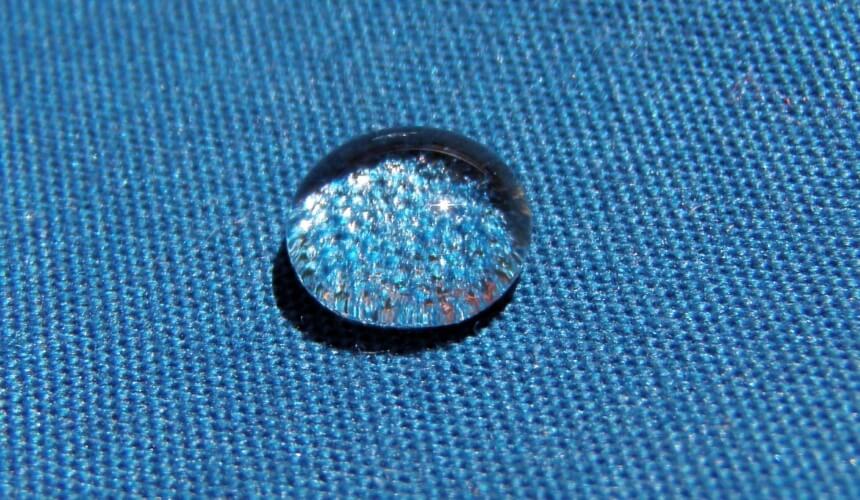
The most important distinction to make in this category is that there a difference between waterproof materials and water resistance materials. Essentially, waterproof means water won’t be able to penetrate the material while water resistant means water can get through the material but at a very slow rate and you can still be assured you will be comfortable and not soaking wet.
While there are some materials, such as wool that are naturally waterproof or water resistant, most waterproof materials involve synthetic materials. To create them, a layer of a non-porous material is added. This material has no holes in it, and thus water can’t penetrate it.
There are different degrees of water resistance. It is measured the pressure of the water on a fabric using millimeters as a measurement. Truly waterproof material can resist the pressure of 1,000 millimeters of water. Water resistant materials will rate high but less than this number, while really sophisticated materials will rate higher.
Another rating to look for is breathability. If you wrap yourself in a sheet of plastic you will stay dry but your skin won’t have any access to air. As a result, any moisture you naturally produce will be stuck inside the wrapping.
Wool is a good, natural option if you want both waterproof and breathability components. Technology is also advancing to create fabrics that offer the best of both worlds.
Let’s take a look at different waterproof material and what they are generally used for.
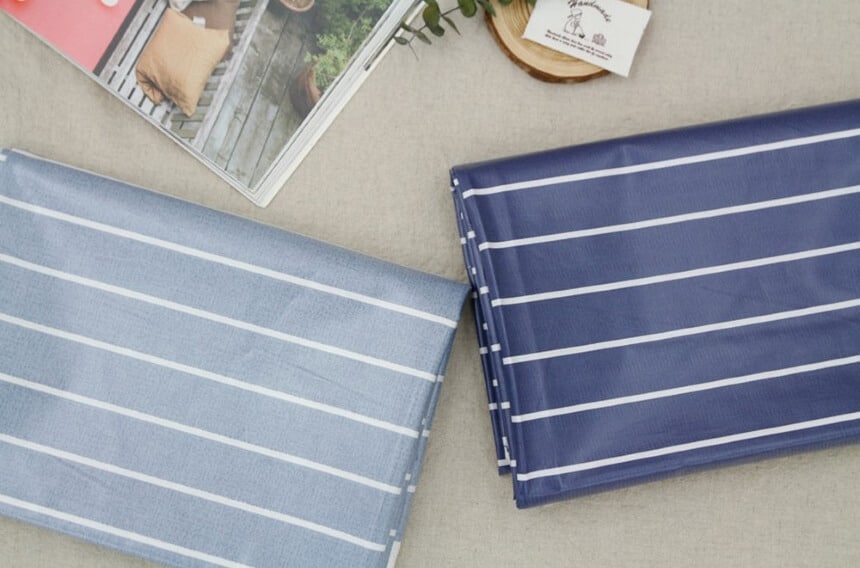
You will find laminated cotton used in a lot of outwear. Ski jackets, hats, and raincoats all use laminated cotton in their construction.
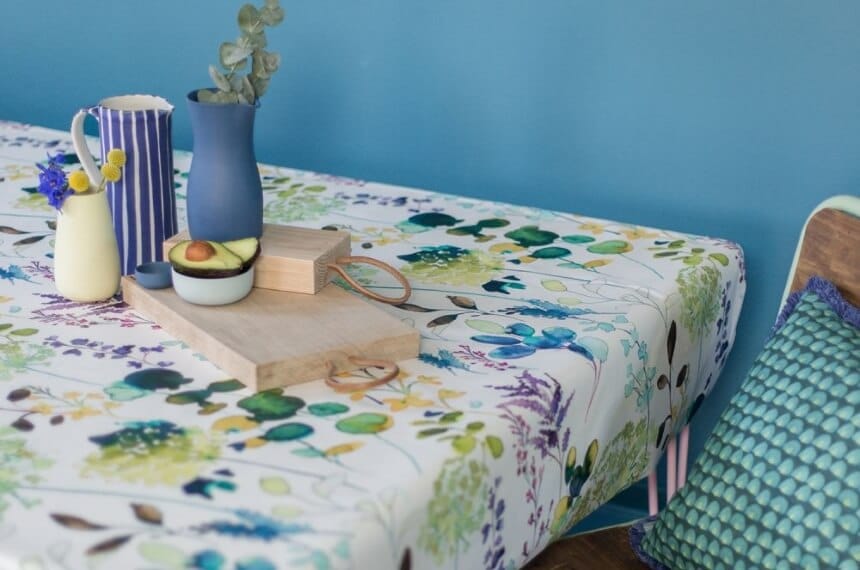
While still popular, oil cloth is now made a bit differently. Instead of using linseed oil, a translucent vinyl layer is added.
Oil cloth is most commonly used to create tablecloths as it is flexible and easy to clean up. It can also be used to cover luggage and smaller bags but is not used to make clothes.

If you see the description boiled wool, this means the wool was boiled first which shrinks it and makes the fabric denser. The density then decreases the amount of water that can penetrate the fabric.
Wool is primarily used to create clothing such as sweaters and hats.

One of the benefits of microfiber is that it wicks away moisture from your body. This is important as if you are exercising and producing a lot of sweat, microfiber will help keep you comfortable.
Microfiber is commonly used to make jackets and some furniture. It is also frequently used for athletic gear.
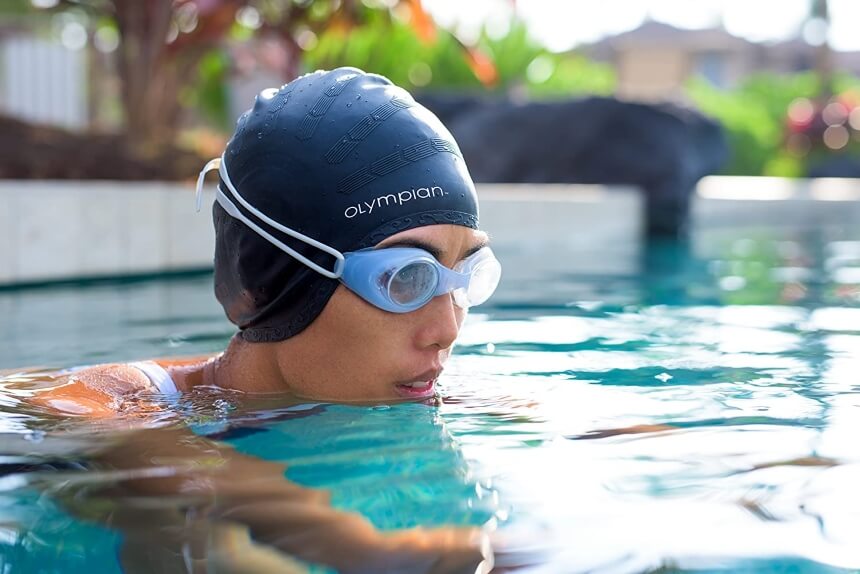
To get latex from rubber trees you need to tap it which involves removing the bark and having the latex run through grooves and out the tree.
Latex is most commonly used to produce gloves and swimming caps. It is also a key ingredient in sporting goods including tennis shoes.

Vinyl can be used to create outdoor upholstery as well as cosmetic bags, placemats, and some clothing.
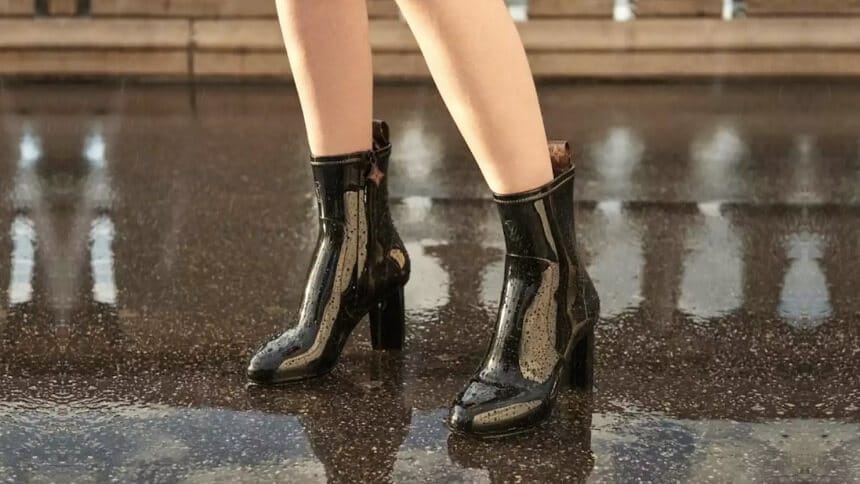
You will commonly find natural rubber in the use of rainboots as well as windshield wipers and car tires.
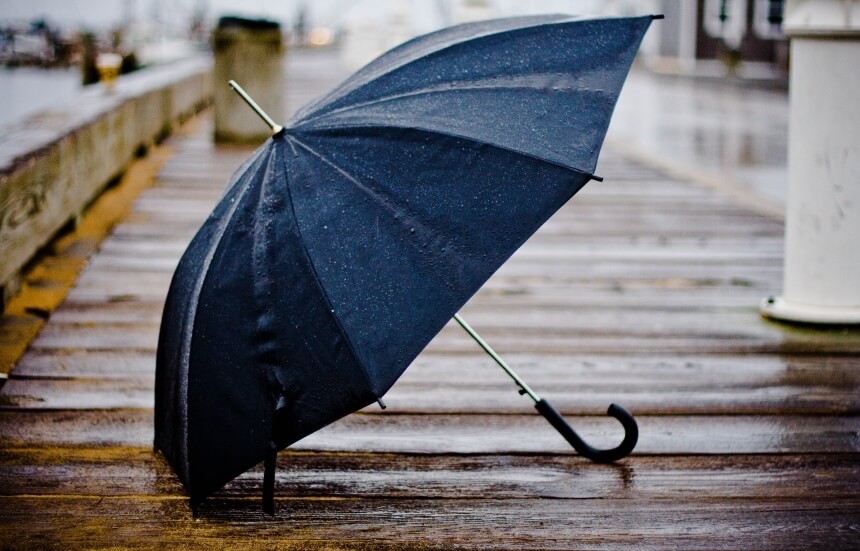
While waterproof, nylon is not breathable and so isn’t used to make clothes. Instead, coated nylon is often used to make umbrellas.
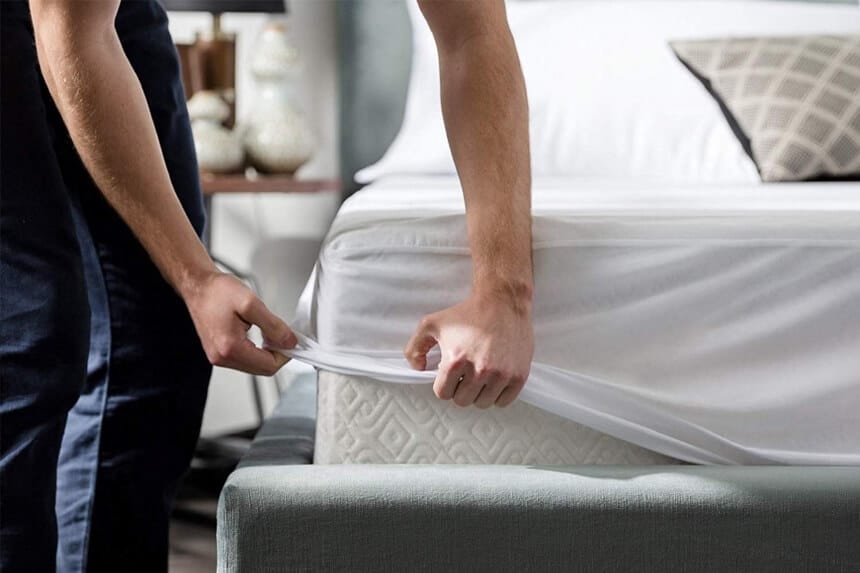
You can find waterproof polyester in many clothing garments including jackets and hats. Some items, such as the Queen Size Waterproof Mattress Protector uses waterproof polyester so that it both repels water and stays breathable.
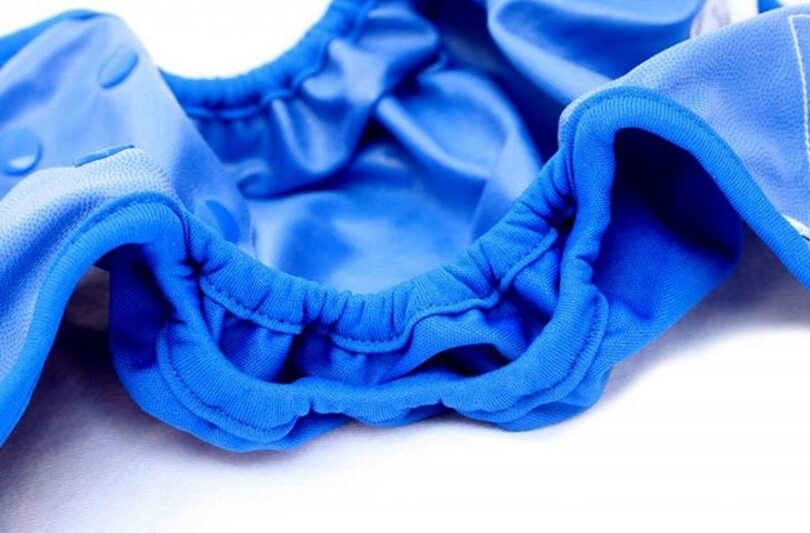
PUL is made with a layer of polyester fabric which then has a layer of waterproof coating. The coating is thin, however, so the fabric can bend and move. In fact, the thickness of the coating is between 1 and 2 millimeters.
A similar material, Thermoplastic polyurethane, or TPU, is also waterproof, and is made in a similar manner. However, TPU is sometimes less durable than PUL.
PUL is often used to make clothes. TPU is also used to make clothes as well as other items such as cloth diapers.
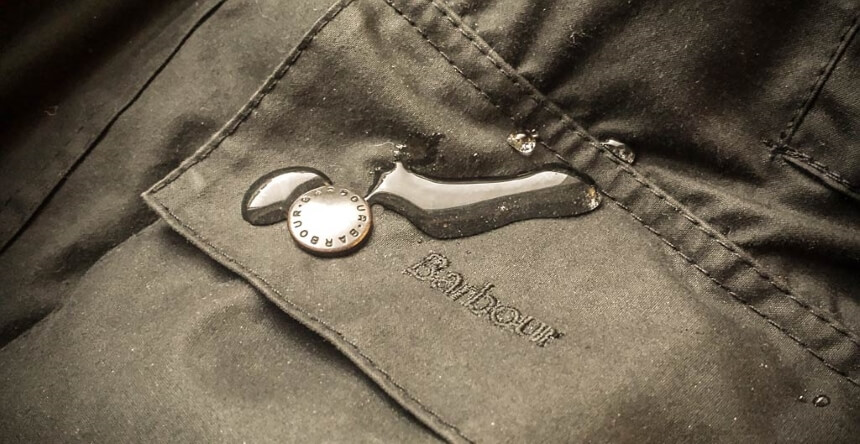
Waxed cotton was popular in the 1920s through the 1950s. However, it is not used very often now as there are more modern alternatives. The biggest downside to waxed cotton is that, while it is waterproof, it is not breathable. Therefore, athletes cannot comfortably use it. Furthermore, waxed cotton is bulky and heavy.
While not used very much anymore, waxed cotton was used for such diverse garments as motorcycle jackets and messenger bags.
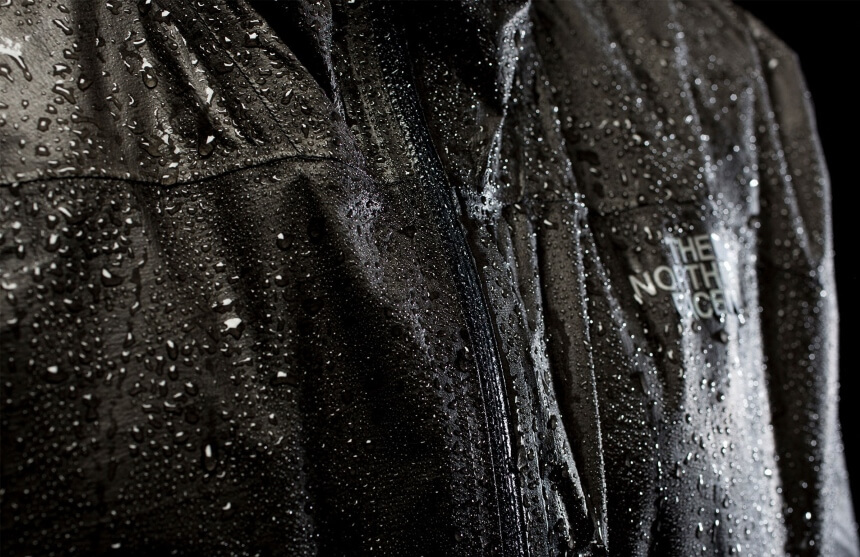
There are many uses for Gore-Tex including camping equipment and jackets. Interestingly, it is also used in the space program and in the military.
For those that still have questions about the world of waterproof materials, we’ve got answers for you.
While the terms are quite similar, waterproof and water resistant are not the same. If you wear something that it waterproof, you will not feel wet. However, if you wear something that is water resistant, while you won’t be soaking wet, if you are exposed to a lot of water, you will eventually feel damp and water will start to seep through the material.
While the terms waterproof and water resistant make sense once you examine them, the inclusion of a third term, water repellent, can further muddy the waters.
Water repellent is more similar to water resistant. While you will still get wet if exposed to rain for long enough, it will keep you moderately dry in the short term.
If all these terms are too confusing, it’s best to stick with waterproof ratings. You want a rating of at least 1000 mm as this means you will stay dry even when it is heavily raining out. A rating of more than 500 mm will keep you fairly dry when it is raining.
Those that purchase a waterproof jacket may find that over time it is not as waterproof as it once was. This is usually because the waterproof coating will eventually break down. However, instead of throwing your jacket away, you can actually use a spray to re-coat it. For example, Star Brite Waterproofing Spray can add extra longevity to jackets, tents, and even boots.
There are many home projects you can craft yourself, such as waterproof cushions and waterproof clothing. However, some people are intimidated by using such materials as they are often thicker and less forgiving when you sew them.
To start with, you will need to find the right fabric for the project, so be sure to check the above list. You will also need a heavy-duty sewing machine, such as a Consew machine. It can work with more durable fabrics and won’t breakdown.
While ironing is an important part of sewing, as it removes creases that naturally occur, you do need to be careful as it can actually melt some fabrics. It’s best to place a thin towel between your waterproof material and your iron to prevent anything from melting.
Whether you’re looking for waterproof backpack material, or want to try your hand at creating outdoor cushions, there are many type of waterproof material to choose from. Wool is a great choice if you want a natural material although it is only water resistant and won’t fully protect you from the rain. PLU, vinyl, and Gore-Tex are all synthetic and offer more protection from the elements. The good think about waterproof material is that it is becoming more flexible, softer, and thinner. There are even options that are breathable so you can be active, stay dry, and be comfortable all at the same time.